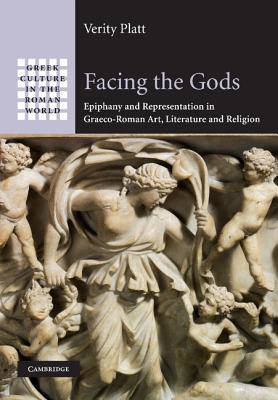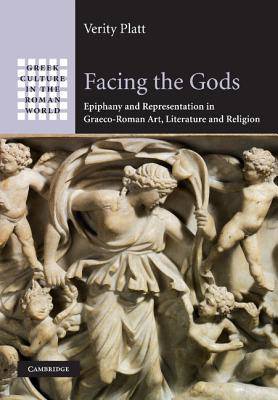
- Afhalen na 1 uur in een winkel met voorraad
- Gratis thuislevering in België vanaf € 30
- Ruim aanbod met 7 miljoen producten
- Afhalen na 1 uur in een winkel met voorraad
- Gratis thuislevering in België vanaf € 30
- Ruim aanbod met 7 miljoen producten
Zoeken
Facing the Gods
Epiphany and Representation in Graeco-Roman Art, Literature and Religion
Verity Platt
€ 255,45
+ 510 punten
Uitvoering
Omschrijving
This is the first history of epiphany as both a phenomenon and as a cultural discourse within the Graeco-Roman world, exploring divine manifestations and their representations, in visual terms as well as in literary, historical and epigraphic accounts. Verity Platt sets the cultural analysis of epiphany within a historical framework that explores its development from the archaic period into the Roman empire. In particular, a surprisingly large number of the images that have survived from antiquity are not only religious, but epiphanically charged. Verity Platt argues that the enduring potential for divine incursions into mortal experience provides a structure of cognitive reliability that supports both ancient religion and mythology. At the same time, Graeco-Roman culture exhibits a sophisticated awareness of the difficulties of the apprehension of deity, the representation of divine presence, and the potential for the manmade sign to lead the worshipper back to an unmediated epiphanic encounter.
Specificaties
Betrokkenen
- Auteur(s):
- Uitgeverij:
Inhoud
- Aantal bladzijden:
- 502
- Taal:
- Engels
- Reeks:
Eigenschappen
- Productcode (EAN):
- 9780521861717
- Verschijningsdatum:
- 28/07/2011
- Uitvoering:
- Hardcover
- Formaat:
- Genaaid
- Afmetingen:
- 175 mm x 249 mm
- Gewicht:
- 1161 g

Alleen bij Standaard Boekhandel
+ 510 punten op je klantenkaart van Standaard Boekhandel
Beoordelingen
We publiceren alleen reviews die voldoen aan de voorwaarden voor reviews. Bekijk onze voorwaarden voor reviews.








